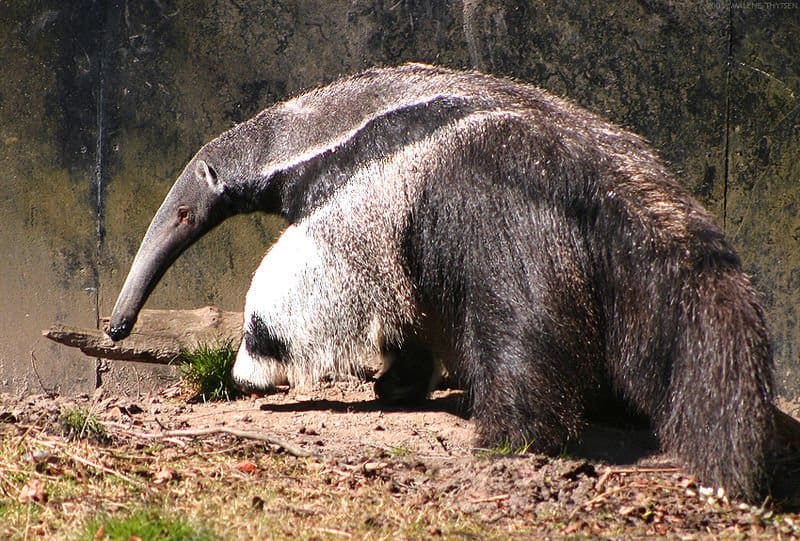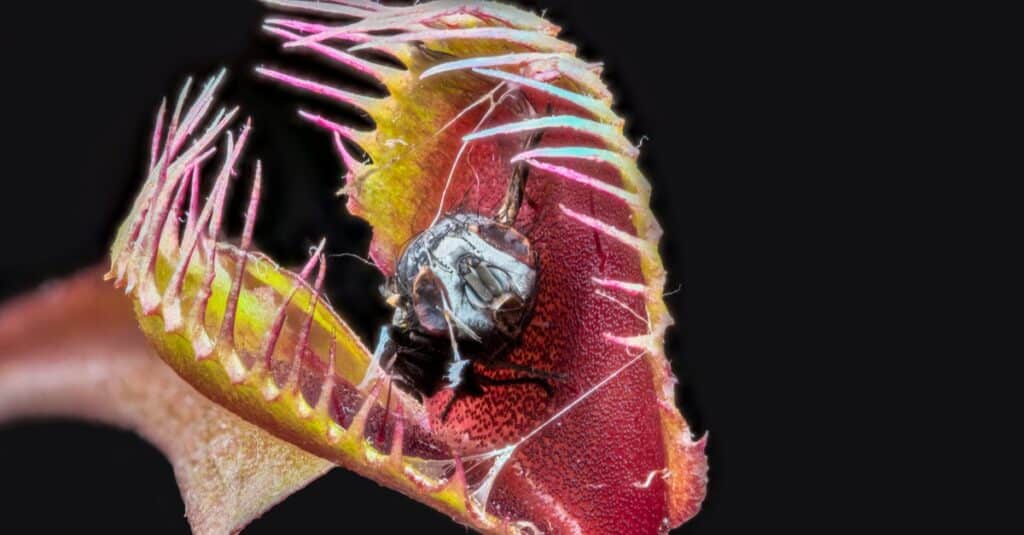While individually tiny, insects make up an extremely large percentage of the animal world. Many animals take advantage of this surplus in organisms and solely consume insects.
Insectivore Meaning
An insectivore is a plant or animal that primarily eats insects. At any given time on earth, there are an estimated quintillion insects. While individually tiny, insects make up an extremely large percentage of the animal world. Many animals take advantage of this surplus in organisms and solely consume insects. But even those not technically classified as insectivores will still supplement their diets with insects. Amphibians were the first insectivores, and they evolved 400 million years ago.

An insectivore is a plant or animal that primarily eats insects. Anteaters are an example of an insectivore.
©Malene Thyssen / Creative Commons – License
How to Pronounce Insectivore
The word “insectivore” is pronounced as [In | Sek | Tuh | Vor].
Insectivore Examples
Some of the most common insectivores include anteaters, aardvarks, pangolins, moles, shrews, hedgehogs, lizards, frogs, and opossums. Many bird species are insectivores, such as swallows, nightingales, flycatchers, swifts, and nightjars. Sloth bears are probably the largest insectivore species. And some primates, like marmosets and tamarins, are also primarily insectivores. Insects themselves can be insectivores, including dragonflies, ladybugs, and hornets.
Insectivore Teeth
Teeth come in all shapes and sizes depending on the diet of the species. Carnivores have long, sharp teeth in the front that help them catch their prey. And their back teeth are serrated, allowing them to shred meat. Insectivores have sharp, pointed cusps that grind insects into the pits of their opposing teeth, almost like a mortar and pestle.
Are Insectivores Carnivores?
Yes, insectivores are carnivores. Insects are a type of animal or meat, so an insectivore is just a specific type of carnivore. Insectivores may not even solely consume insects but will be classified as an insectivore if they make up the majority of their diet.

Venus flytrap (Dionaea muscipula) with remains of captured digested fly.
©Chrispo/Shutterstock.com
Can Plants be Insectivores?
There are, indeed, insectivorous plants. These unique plants derive their nutrients from animal matter, including insects and other arthropods. Plants that rely on animals for nutrients possess special adaptations such as traps, entangling, pitfalls, and sticky surfaces. Some examples of insectivorous plants include Venus flytraps, butterworts, bladderworts, sundews, and many more.



